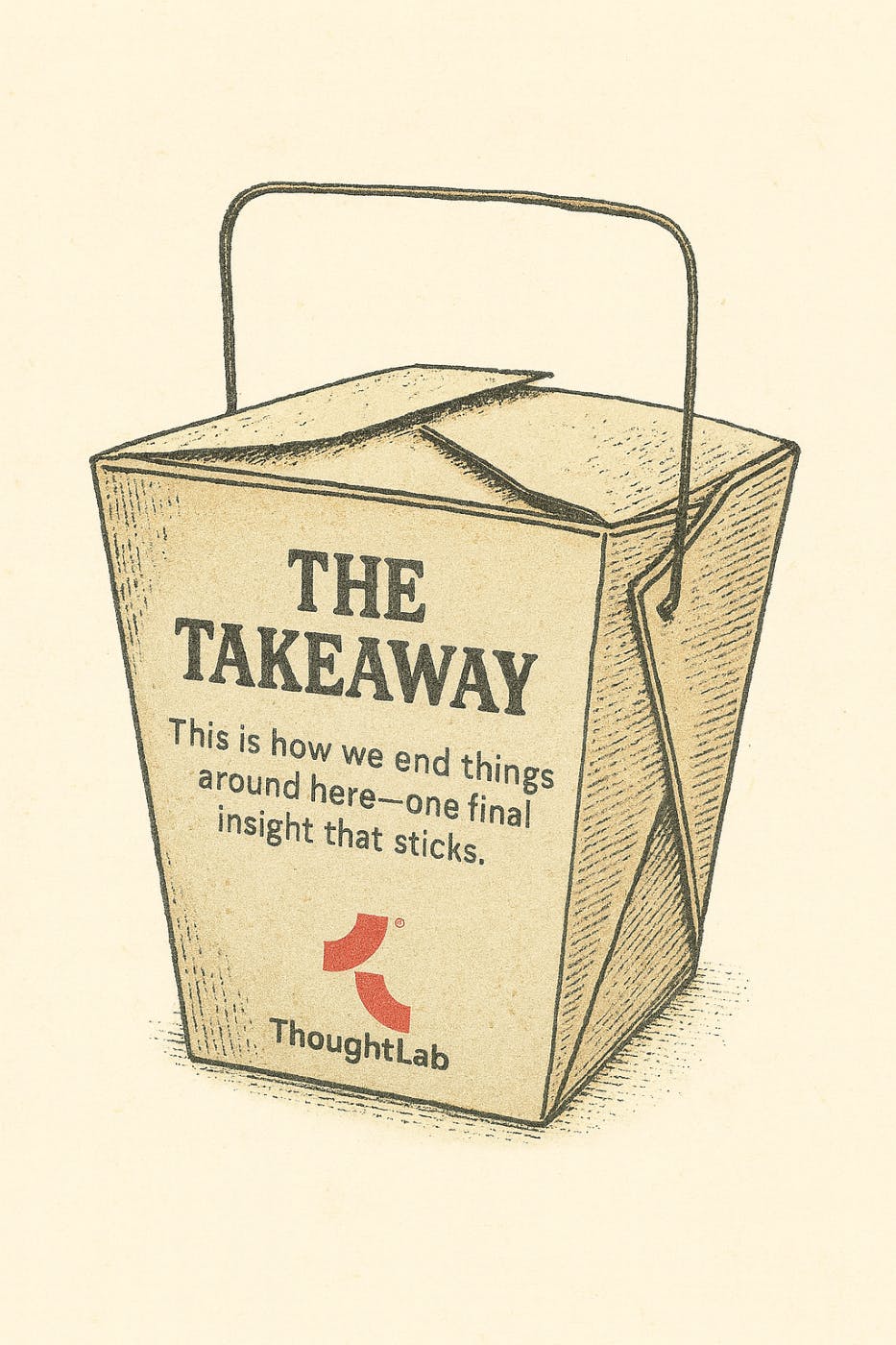

Language functions in much the same way. The words we choose are shaped by who we are in that moment, who we are speaking to, and the context in which we speak. The same thought can be expressed in a thousand ways, each variant conveying subtle shades of meaning.
“Waits at the window/wearing a face that she keeps in a jar by the door.” from Eleanor Rigby, by The Beatles.
I have probably introduced this line to you before, dear readers, and I am now presenting it again. It is an evocative line. It could mean anything. Maybe the face is the cream she uses to cover blemishes, or a literal mask in a jar. Maybe she is so ignorable that she has no face, and in this jar by the door, she can open it and pull out her actual face, for meetings, weddings, first communions, and the like in that church where she waits by the window.
I love this line because you can accept it, or you can drive yourself insane trying to figure out what it means. However, you don’t have to. You can just hear it, read it, and allow whatever it makes you feel to be. No deep analysis, just accepting the lyric and going on. Fun!
However, today I am writing about AI and words, and so I propose that the line needs no explanation, needs no deep dive; it just needs to evoke feelings, ideas, and images. Like a good lyric or piece of writing does.
I love this lyric as I love words, and the combination of words in this lyric is exceptional to me, because they can conjure so much, from the lyrical to the grotesque to the realistic to the romantic. This is wide open to all feelings. This is a great lyric.
For those of us who live by the pen, we can see clearly our deaths by the pen when the pen is wielded by an AI device. The problem is, not all words need to be reduced to their one and only true meaning. If you’ve worked with AI, like ChatGPT, you may not be aware of how many people are behind the scenes, analyzing, calculating, categorizing, and trying to standardize language.
Think about that sentence for a moment. First off, what does it mean to standardize something? The definition is: cause (something) to conform to a standard. These ‘standards’ are set by a consensus, and that’s what the many minions behind AI are trying to do: set a language standard. And why do they want to do this? Because people seem to want to know what everything means. Which are the perfect words that mean the exact thing we’re thinking about? And that’s fine, people like definitions, but what if there isn’t a solid definition? What if the one who wrote the words, put them in a specific order, and had no desire to make them relay one specific answer? Like poor Eleanor Rigby, people want to know what this face she keeps in a jar by the door is. Why? Why is the ‘real meaning’ so important? Can we not be happy with the fact that our minds will fill in the gaps, will drop images on us, and those gap fills and images may change? They may change across a lifetime, or even one day. When I first heard the song Eleanor Rigby, that line didn’t haunt me the way it does now. Now, when I look at the lyric and look at my life, I can understand. I can understand the numerous faces I put on during a day, during a one-hour meeting, and during a quick catch-up with an old friend on the street.
We, as people walking this mortal coil, are not one thing. We don't think, act, or feel one way. That all changes with time, attention, and life experience, and the people we interact with. Every time we meet someone new or see someone after a long time apart, we understand that people are constantly changing, moving, and growing. All the time. So, the idea of standardizing the language, to me, is flattening the language out, ruining nuance, and pounding the language into submission so that it fits into a standardized package that can be replicated by AI. But the replication is a slim view of who we are.
Our natural instinct as humans is to be who we are, believe what we want, and be the people we want to be. All along, we know that the people we aspire to be may change as we move to a new city, start a new job, or meet a new person. We the people are changing all the time, just as the language we the people use changes all the time. I had to have a high school kid explain what the term ‘no cap’ meant. Am I better for it? No, frankly, I think that some additions or modifications of language make communicating more difficult. However, I would hate to be forced into a standard.
And that brings me to the heart of today’s reflection: if language is fluid, rich, and alive, then any attempt to flatten it—whether by strict rules, definitions, or AI—risks losing its humanity. Words are not just tools for communication; they are mirrors of thought, identity, and experience. And when AI enters the equation, a subtle tension arises: efficiency and standardization on one hand, versus nuance, ambiguity, and authentic expression on the other. This blog is about exploring that tension, about why the richness of human language—and the flexibility of interpretation—matters more than ever in an AI-driven world.

Human Identity & Language
The face in the jar is more than a lyric; it’s a metaphor for the multiple selves we carry, display, and sometimes hide. Each of us walks through the world wearing a collection of faces. Some are for work meetings, some for friends, some for family. Some faces are polished, others are raw, and some are only glimpsed by a select few. Like Eleanor Rigby’s face, we store them carefully, revealing them when needed and concealing them when not.
Language functions in much the same way. The words we choose are shaped by who we are in that moment, who we are speaking to, and the context in which we speak. The same thought can be expressed in a thousand ways, each variant conveying subtle shades of meaning. Our speech and writing are never static—they adapt, shift, and evolve just as we do.
This is why ambiguity is not a flaw; it is a feature. The words on a page or the lines of a song gain meaning not just from the dictionary, but from the interaction between writer, reader, and context. A lyric like “wearing a face that she keeps in a jar by the door” is a perfect example. It does not hand us a single, fixed interpretation. Instead, it invites us to participate, to imagine, to reflect on our own experiences. It is alive because it allows for multiple truths.
Human communication is built on this flexibility. We rarely speak or write in absolutes because life is rarely absolute. Our understanding changes with new experiences, and our language evolves alongside it. A word, phrase, or lyric can shift meaning over the course of a lifetime—or even across a single day. This is the beauty of words, and it mirrors the beauty of human identity: fluid, complex, and constantly in motion.
But when we attempt to fix meaning, to force words into rigid structures, we risk flattening both language and identity. Standardization treats words like static objects, ignoring the living, breathing human experiences they are meant to convey. And in doing so, it strips away the nuance, subtlety, and ambiguity that make communication not just functional, but meaningful.
The faces we wear, the words we choose, the expressions we craft—all of these are in dialogue with one another. They are signals of who we are at a given moment, for a given audience. And just as it would feel wrong to be forced to wear a single face for every interaction, it feels wrong to constrain language to a single “correct” meaning. Our selves are too diverse, our experiences too rich, and our words too alive to be reduced to formulaic simplicity.
Understanding this is essential, not just for poets or lyric-lovers, but for anyone who communicates for a living—especially brands. Every time a brand speaks, it is choosing a face to wear, a voice to project, a version of itself to reveal. And just as individuals change their faces with context, brands must adapt their language to resonate with different audiences, channels, and moments in time. This is the human element of communication—the part that AI cannot fully replicate, because it is tied to lived experience, empathy, and context.

AI and the Standardization of Language
If human language is fluid, alive, and full of subtlety, AI approaches it in almost the opposite way. Behind the scenes of tools like ChatGPT, there are countless engineers, linguists, and researchers working to impose patterns, rules, and standards on the messy, chaotic reality of human speech. AI doesn’t experience ambiguity—it calculates probabilities, predicts likely meanings, and produces outputs that conform to consistency. In short, it standardizes language.
To standardize is to flatten. To standardize is to remove the rough edges, the outliers, the contradictions, and the multiplicity of meaning that give language depth. An AI doesn’t debate a lyric; it won’t linger on the unsettling image of a face in a jar. It sees words, it sees probabilities, it sees a most-likely “correct” interpretation, and it replicates it. What we call nuance, it calls noise. What we call ambiguity it calls uncertainty to be resolved.
Think about the implications. Every time we rely on AI for writing, editing, or content generation, we introduce a pressure toward uniformity. The words become predictable, the phrasing optimized, the meaning constrained. A lyric like “wearing a face that she keeps in a jar by the door”—or the copy you craft for a client, or the brand story you carefully nurture—cannot exist in the same way when its language is reduced to probabilities. The AI can reproduce words, but it cannot reproduce lived context, internal reflection, or the human tension between clarity and ambiguity.
This is why ambiguity is so threatening to AI. Humans revel in the spaces between words; we fill them with imagery, emotion, and personal experience. We are comfortable with multiple interpretations because we understand that context changes everything. We can carry contradictions, hold paradoxes, and shift our perspectives over time. AI, by contrast, wants a single, most likely answer. In doing so, it flattens not only language but also experience itself.
Consider marketing, branding, or storytelling. Every brand communicates in a context, for a specific audience, and at a particular moment in time. Words are carefully chosen not just for meaning, but for feeling, resonance, and alignment with identity. AI can draft a press release, generate social posts, or rewrite a blog in consistent, optimized language—but it cannot replicate the layers of human intent that make the message authentic. It cannot know the history of the brand, the quirks of its audience, or the unspoken associations that make a word land differently in different hearts. It offers replication, not interpretation.
And yet, the pressure to rely on AI is growing. Efficiency, scale, and speed are seductive promises. Humans, after all, are fallible and slow; AI is fast, tireless, and predictable. But this is where the tension becomes critical: do we trade authenticity, ambiguity, and nuance for speed and convenience? If words are not just tools but mirrors of thought and identity, flattening them is not a trivial loss—it is a reduction of our very capacity to communicate who we are.
The problem intensifies when AI becomes the standard itself. If we train systems to value only the most probable phrasing, the most “correct” grammar, the most conventional meaning, we begin to see a narrowing of expression. Subtle metaphors, inventive language, layered meaning—all the aspects of communication that give words life—risk being filtered out. And because AI outputs are being used more and more in professional, educational, and creative contexts, the flattening effect is not hypothetical—it is already happening.
This is why we must insist on preserving ambiguity and nuance. The beauty of the lyric, the artistry of prose, the individuality of brand voice—they all rely on language that resists standardization. Eleanor Rigby’s face in the jar is not a problem to solve; it is an invitation to explore, reflect, and interpret. The moment we try to give AI a single “true” meaning, we erase the richness of the human mind that interprets it differently each time, in each context, for each person.
Language is alive because humans are alive, ever-changing, ever-shifting, and multi-faceted. Flatten it, and we flatten ourselves.

Implications for Brands and Marketers
If ambiguity and nuance are essential to human communication, then they are just as essential for brands. Every brand, at its core, is a storyteller. Each message, each campaign, each interaction is a deliberate choice—a curated face worn for a particular audience, moment, or channel. Like Eleanor Rigby’s hidden faces, brands reveal only what they intend to, and carefully choose the words that reflect identity, personality, and values.
AI can draft, rewrite, and even optimize content for engagement, clarity, or search algorithms—but it cannot replicate the lived experience behind a brand. It cannot inhabit the culture, understand the history, or sense the subtle emotional rhythms that make a message land authentically. Every time we rely solely on AI to communicate, there is a risk: the words may be correct, the grammar flawless, and the sentence structure optimized—but the voice may lose its soul, the meaning may flatten, and the personality may vanish.
Consider campaigns that rely on metaphor, story, or layered messaging. The most memorable brand moments are often those that invite interpretation, provoke thought, or evoke emotion. These are not “solved” by the most probable word choice; they are born in the spaces between words, in the tension, in the ambiguity that humans can navigate and appreciate. Flatten that, and the brand loses its resonance.
Nuance matters not just for aesthetics—it matters for connection. A brand that communicates with depth, subtlety, and honesty builds trust, loyalty, and long-term engagement. A brand that is flattened, sanitized, or fully standardized risks blending into the noise, becoming predictable, and ultimately forgettable. Human audiences respond to authenticity because it mirrors their own complexity. They feel it when a brand acknowledges contradiction, emotion, or even uncertainty. AI can imitate these patterns, but imitation is not the same as genuine expression.
Brands also evolve, just as people do. The words they use, the voice they adopt, and the messages they send shift over time with new products, markets, and cultural contexts. This evolution cannot be fully anticipated or encoded into an algorithm. It requires ongoing human interpretation, creativity, and judgment. Just as we humans wear different faces in different settings, brands adapt their tone, style, and content for context. Attempting to standardize that through AI alone is like trying to capture a river in a jar: the shape is never static, the flow never identical, and the nuance always exceeds containment.
For marketers and brand strategists, this means that AI should be a tool, not a substitute. Efficiency, scale, and analysis are powerful benefits—but they must be balanced with human insight, intuition, and an appreciation for ambiguity. The best brands will be those that leverage AI to amplify human creativity, not to replace it. They will embrace the tension between consistency and nuance, clarity and interpretation, optimization and authenticity.
Ultimately, brands that succeed in an AI-driven world will do so by honoring the same principles that make language human: allowing for multiple meanings, recognizing context, and valuing subtlety. They will cultivate voices that feel alive, flexible, and capable of evolving. They will recognize that flattening language is not just a stylistic concern—it is a strategic risk. And in doing so, they preserve what makes their stories compelling, their communication meaningful, and their identities distinct.

Embracing Ambiguity
Ambiguity is not a flaw. It is the lifeblood of language, thought, and human connection. The spaces between words, the multiple interpretations a phrase can carry, the images and emotions conjured in the reader’s mind, these are the elements that give words power. Eleanor Rigby’s face in the jar is not a problem to solve. It is an invitation to reflect, imagine, and feel. And the same applies to brands, stories, and every act of communication.
To embrace ambiguity is to acknowledge that meaning is never fixed, that language is not a static container for truth. It is a conversation between writer and reader, speaker and listener, brand and audience. It is alive, evolving, and responsive. When we try to force clarity at all costs, we risk losing the richness that makes communication human.
For brands and marketers, embracing ambiguity means resisting the pressure to standardize every message, optimize every sentence, and sanitize every nuance. It means allowing room for interpretation, emotional resonance, and subtlety. It means recognizing that the most powerful words are often the ones that invite reflection, stir imagination, and linger in the mind long after the message is received.
Embracing ambiguity also requires humility. It is an acknowledgment that no algorithm, no matter how sophisticated, can fully capture human experience. AI can replicate patterns, suggest phrasing, and even mimic voice. But it cannot replicate the lived context, the emotional layers, or the contradictions that make communication meaningful. By holding space for ambiguity, we preserve what is uniquely human: the ability to interpret, to imagine, and to create.
This is not a rejection of AI. Far from it. AI can enhance communication, streamline processes, and generate ideas at an unprecedented scale. But the challenge is balance. We must leverage AI as a tool, not a replacement, and resist the temptation to flatten words into neat, predictable packages. Ambiguity, nuance, and context are not inefficiencies. They are what give communication depth, relevance, and authenticity.
In practice, this means making deliberate choices, allowing your brand voice to evolve, resisting overly prescriptive copy edits, and welcoming interpretation from your audience. It means writing with care, listening with intention, and valuing words as living expressions of thought and identity. It means seeing every word not as a fixed object, but as a living invitation to connection.
Ambiguity is the mirror of human experience, the reflection of our complexity, and the playground of creativity. To embrace it is to honor the richness of language, the diversity of identity, and the power of expression. It is to acknowledge that, like Eleanor Rigby’s face in the jar, some things cannot and should not be fully defined. And it is precisely in that space, between words and interpretation, that human communication thrives.

The Takeaway
Words are alive. They carry our thoughts, emotions, and identities. They shift, evolve, and adapt just as we do. Eleanor Rigby’s face in a jar reminds us that meaning is not always fixed and that ambiguity can be a source of richness, not confusion. Human language thrives in these in-between spaces, where interpretation, imagination, and nuance coexist. Flattening it through rigid standardization or overreliance on AI risks losing the very essence that makes communication human.
For brands, marketers, and communicators, this is a critical lesson. Every message a brand sends is a choice about identity, personality, and resonance. Standardized, AI-generated language may deliver efficiency, but it cannot replicate the lived experience, emotional complexity, or context-specific subtlety that makes messaging authentic and memorable. ThoughtLab’s philosophy embraces this complexity. We understand that brands are ecosystems of meaning, evolving with their audience and their context. Our work is grounded in honoring that nuance while leveraging tools like AI to enhance—not replace—human insight.
The challenge, and the opportunity, is to approach language with intention. To allow ambiguity to exist where it sparks reflection. To carefully wield AI as a tool to extend creativity without flattening it. To craft messages that resonate not only because they are “correct” but because they are felt, interpreted, and lived by the people who encounter them. This is where human communication—and branding—retains its power.
In the end, embracing ambiguity is not about uncertainty or indecision. It is about acknowledging the depth and dynamism of human experience. It is about preserving nuance in a world increasingly seduced by speed and standardization. It is about crafting words that are flexible, authentic, and alive. And it is about ensuring that even as AI becomes a part of our toolkit, the voices we create—whether for ourselves or for our brands—remain unmistakably human.
Language is not a problem to solve; it is a space to inhabit. At ThoughtLab, we guide brands through that space, helping them navigate ambiguity, capture nuance, and communicate with clarity without losing authenticity. Words matter, context matters, and people matter. The moment we accept that, we reclaim the power of language in a world that is always changing, always interpreting, and always human.
